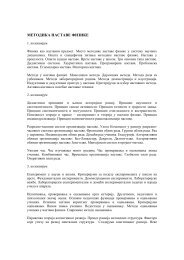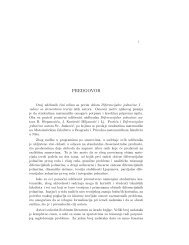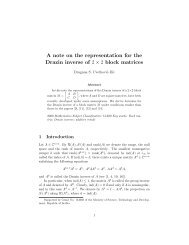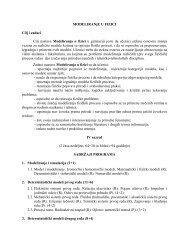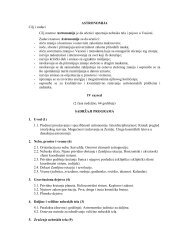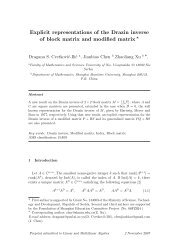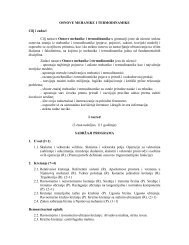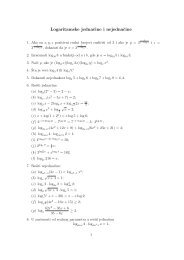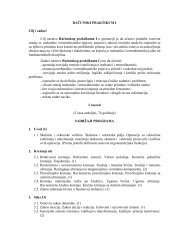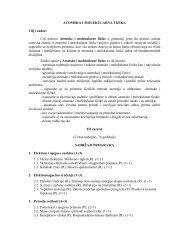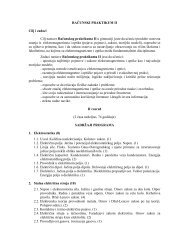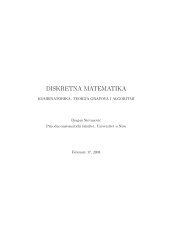The Hankel Transform of the Sum of Consecutive Generalized ...
The Hankel Transform of the Sum of Consecutive Generalized ...
The Hankel Transform of the Sum of Consecutive Generalized ...
You also want an ePaper? Increase the reach of your titles
YUMPU automatically turns print PDFs into web optimized ePapers that Google loves.
5Now,Also,∞∑T (2n, n; L) t n =n=0∞∑T (2n + 2, n; L) t n =n=0∞∑n=0∞∑n=0P (0,0)nP (2,0)n((L+1L−1L+1L−1∞∑T (2n, n − 1; L) t n = t ·n=0∞∑T (2n + 2, n + 1; L) t n = 1 t ·n=0) ((L− 1)t) n= G(0,0)(L+1L−1 , (L − 1)t ),) ((L− 1)t) n= G(2,0)(L+1L−1 , (L − 1)t ).() }{G (2,0) L+1, (L − 1)t − 1 ,L−1() }{G (0,0) L+1, (L − 1)t − 1 .L−1<strong>The</strong> generating function G(t; L) for <strong>the</strong> sequence {a n } n≥0 is given byG(t; L) =∞∑a n t nn=0(14)= t + 1 ( )( )G (0,0) L+1L−1t, (L − 1)t − (t + 1)G (2,0) L+1, (L − 1)t − 1 L−1t .<strong>The</strong> function()L+1ρ(t; L) = φ , (L − 1)t = √ 1 − 2(L + 1)t + (L − 1)L−1 2 t 2 (15)has domainorD ρ =(−∞, 1 − 2√ L + L) (√1 + 2 L + L)∪1 − 2L + L 2 1 − 2L + L , +∞ 2D ρ = (−∞, 1/4) (L = 1).(L ≠ 1),<strong>The</strong>orem 2.1. <strong>The</strong> generating function G(t; L) for <strong>the</strong> sequence {a n } n≥0 isG(t; L) = t + 1 { }1ρ(t; L) t − 4− 1 (1 − (L − 1)t + ρ(t; L)) 2 t . (16)Example 2.1. For L = 1, we getG(t; 1) =and for L = 2, we find∞∑a n (1) t n = 1 tn=0( (1 −√ 1 − 4t)(1 + t)2t)− 1 . (17)G(t; 2) =∞∑n=0a n (2) t n = − 1 { }t + t + 1 1√t2 − 6t + 1 t − 4(1 − t + √ . (18)t 2 − 6t + 1) 2



